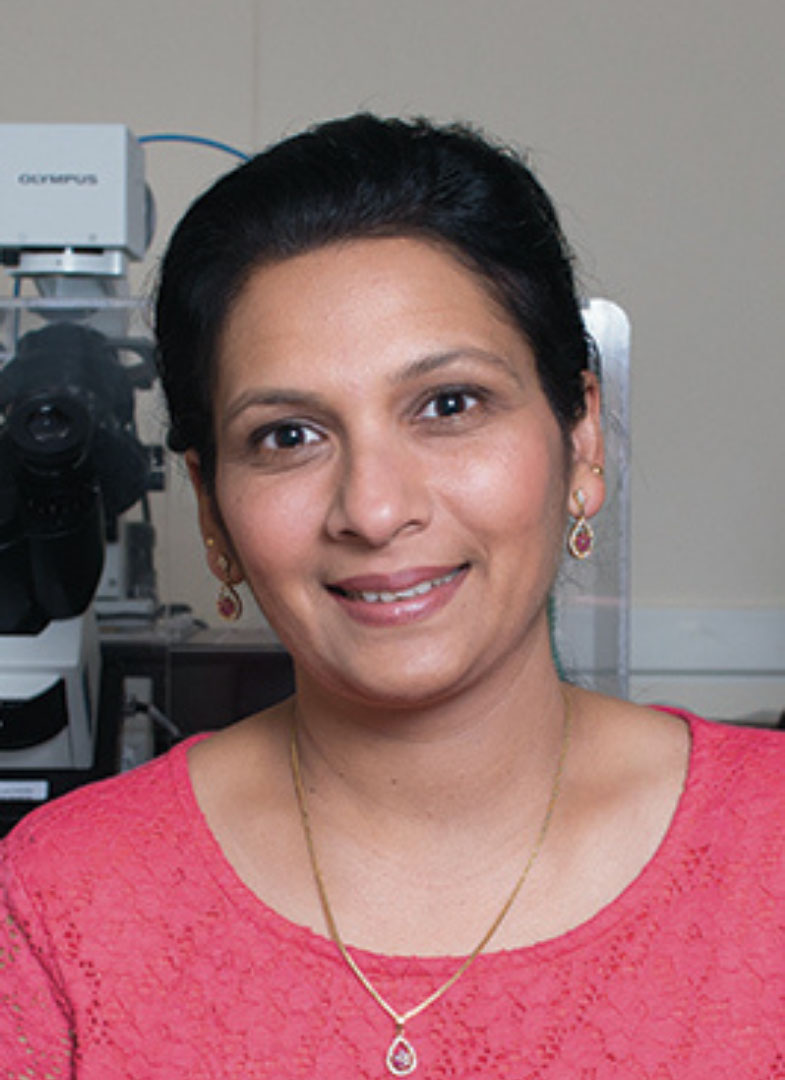Supriya Prasanth’s laboratory is focused on understanding how replication initiation is coordinated with chromatin organization and cell cycle progression. Defects in accurate replication and faithful chromosome segregation cause genomic instability, a hallmark of all cancers. Using multi-disciplinary approaches, the Prasanth lab examines how replication initiation proteins Origin Recognition Complex and ORC-associated (ORCA/LRWD1) regulate diverse cellular processes. and its involvement in cancer progression. ORC and other human replication initiation proteins are required for replication of Epstein Barr virus (EBV) that is associated with Burkitt’s lymphoma. Her laboratory identified ORCA/LRWD1, that maps to 7q22.1 in human cells, a region frequently amplified in esophageal squamous cell carcinoma or shows rearrangements and loss of heterozygosity in myelodysplasia and acute leukemia. Studies have shown its involvement in Ewing’s sarcoma. Multiple subcomplexes of ORC regulate different aspects of cell cycle progression and thus play pivotal roles in the maintenance of genomic stability. The long-term goal of Prasanth’s laboratory is to understand how ORC executes and coordinates various aspects of cell growth, proliferation and survival. Several replication initiation proteins are used widely for cancer diagnostic purposes. Understanding how replication proteins govern multiple cellular pathways is expected to uncover novel pathways that would be useful to prevent tumorigenesis and key to allow more effective therapeutic targeting to combat cancer.
Prasanth is the Head of Cell and Developmental Biology in UIUC’s School of Molecular and Cellular Biology, and she teaches cancer cell biology courses. She received her MS in Genetics from the University of Delhi and her PhD in Molecular Genetics and Life Sciences from the National Institute of Immunology. She was a postdoctoral fellow for the Leukemia and Lymphoma Society at the Cold Spring Harbor Laboratory in New York.

